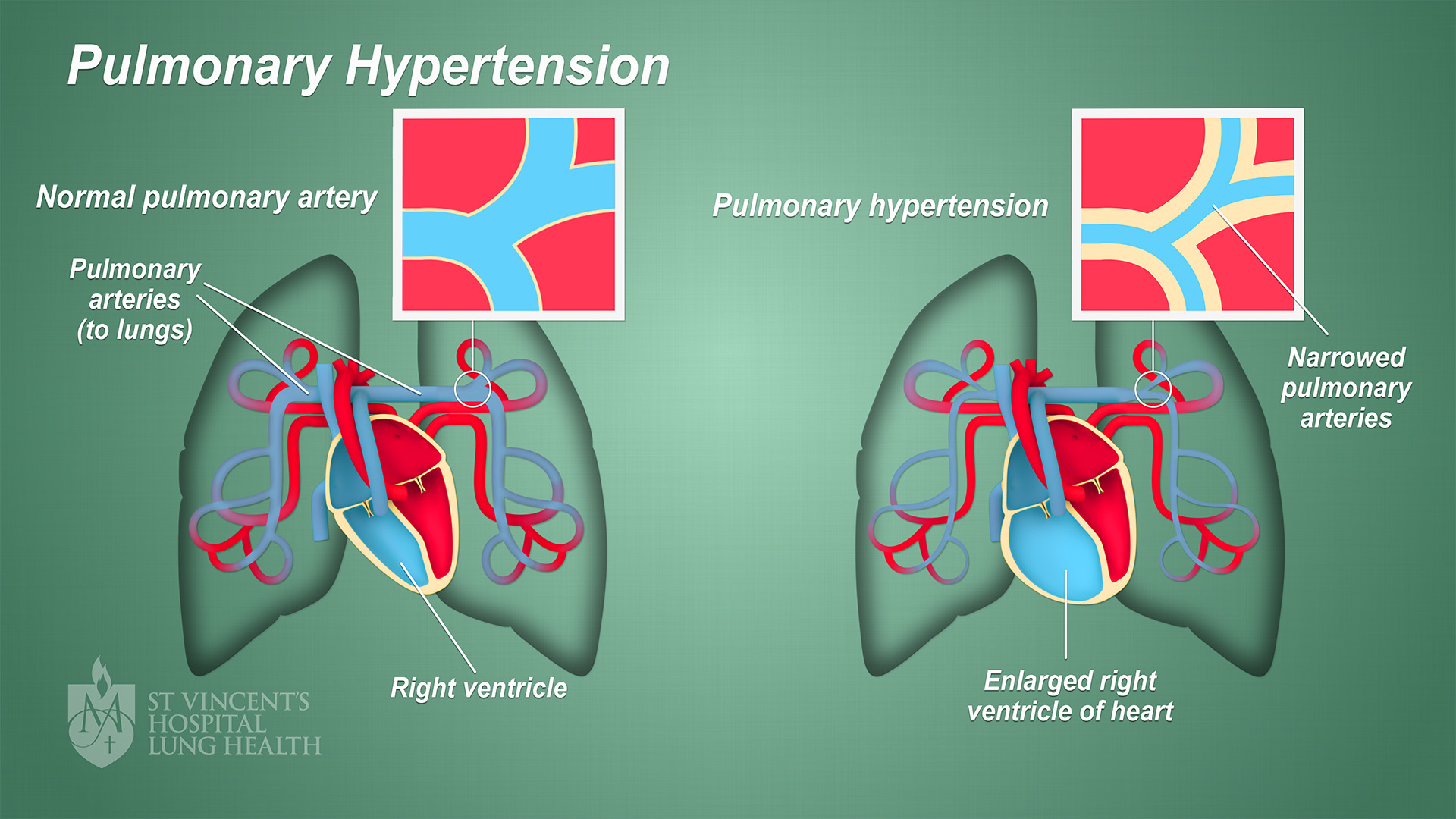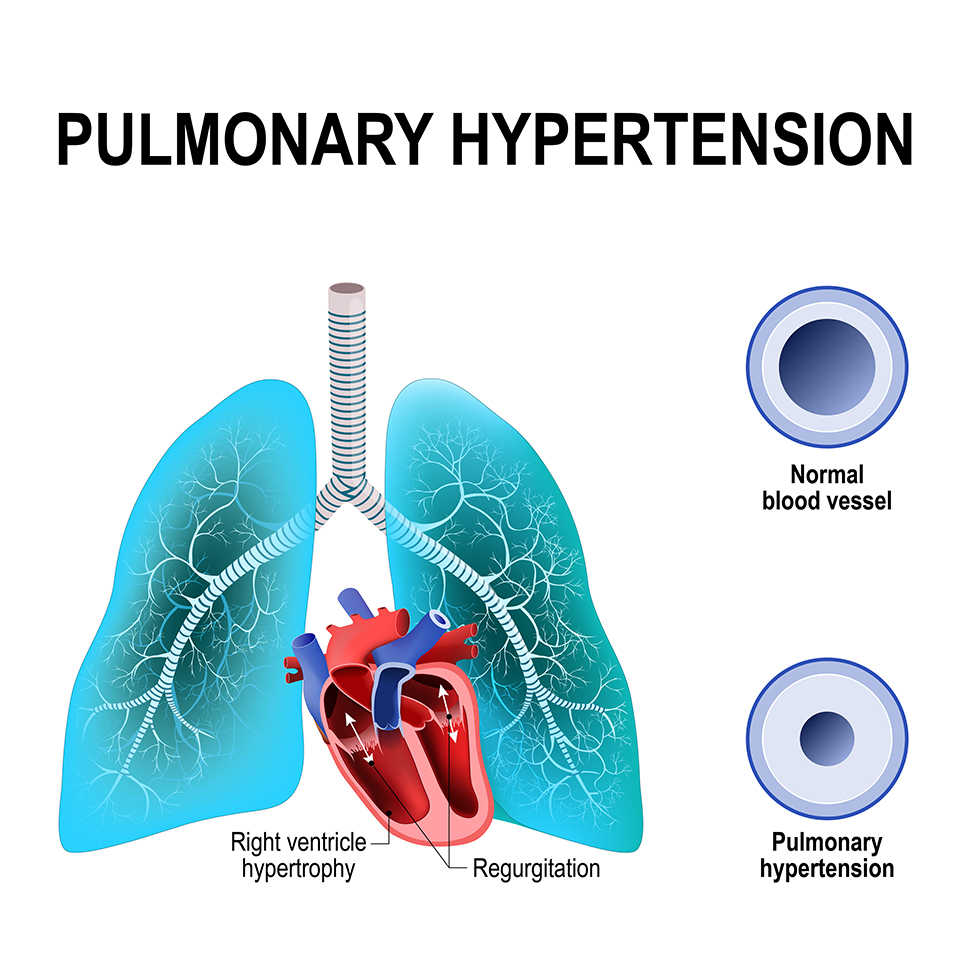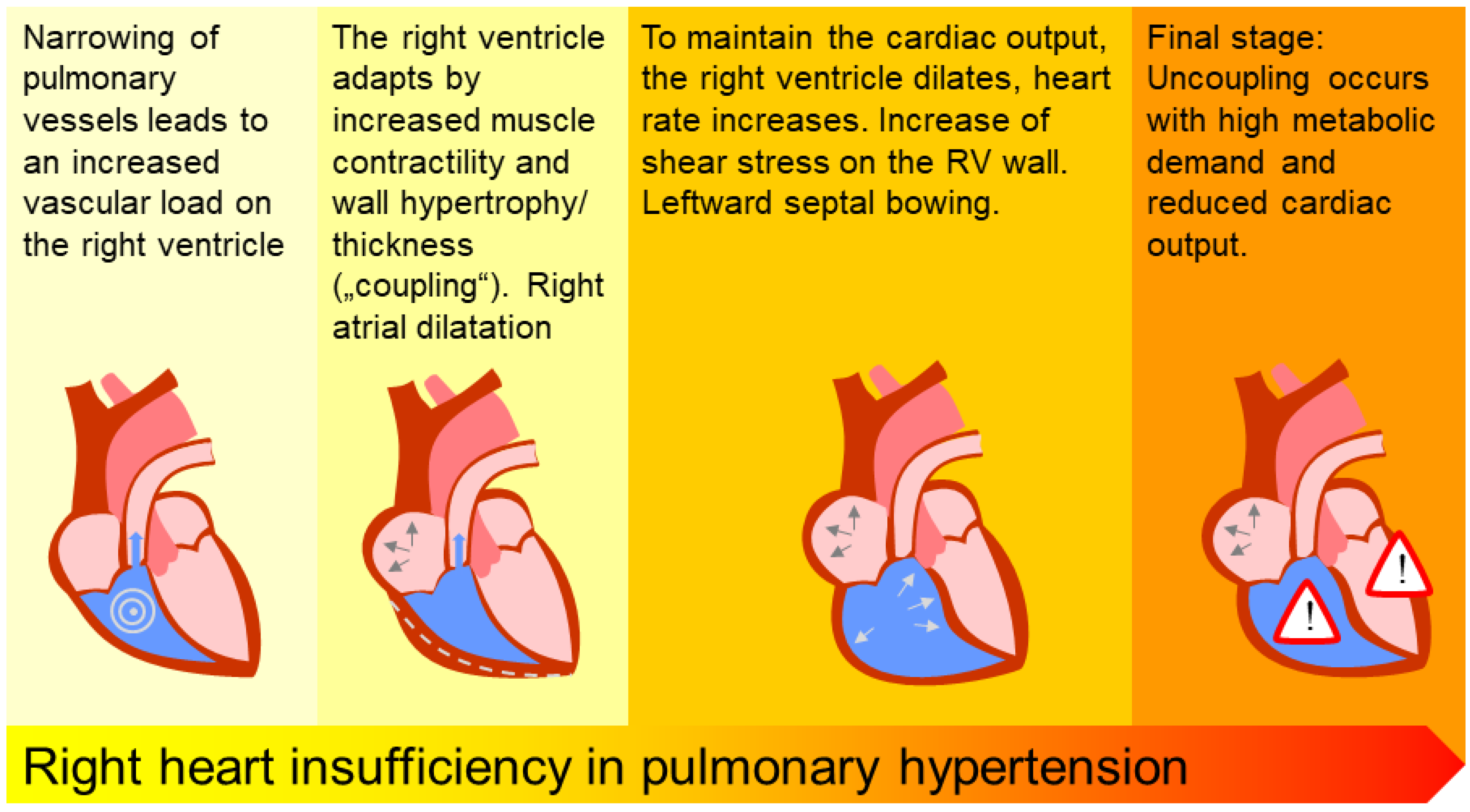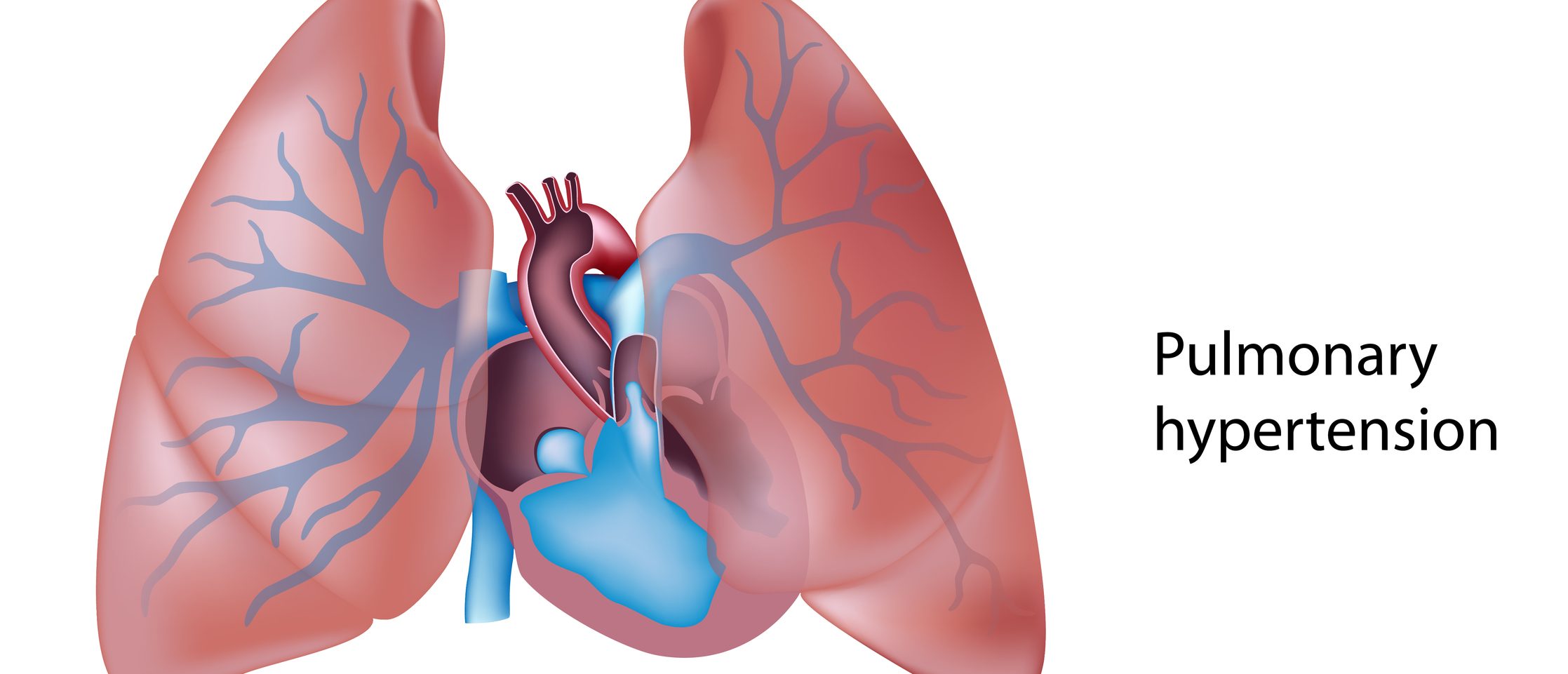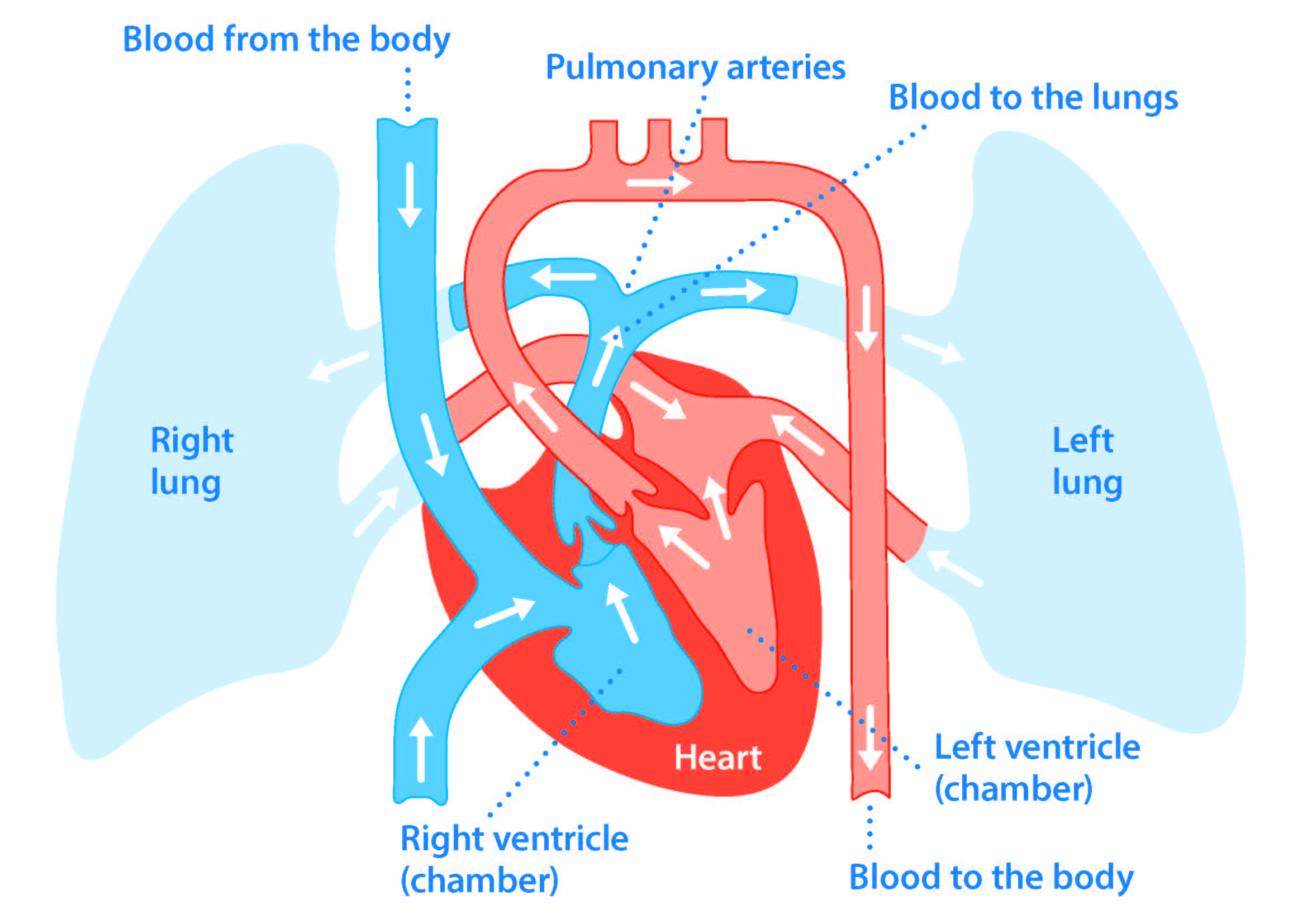Pulmonary Hypertension And Right Heart Failure

Pulmonary hypertension (PH), a condition characterized by high blood pressure in the arteries of the lungs, is increasingly recognized as a significant health concern, often leading to right heart failure. Understanding the complexities of PH and its progression to right heart failure is crucial for early diagnosis and effective management.
PH is not a single disease, but rather a consequence of various underlying conditions. The World Health Organization (WHO) classifies PH into five groups based on the cause, ranging from pulmonary arterial hypertension (PAH) to PH associated with left heart disease or lung diseases.
Understanding Pulmonary Hypertension
PH develops when the pulmonary arteries become narrowed, blocked, or damaged. This restricts blood flow to the lungs, increasing pressure in the pulmonary arteries.
The heart, specifically the right ventricle, must work harder to pump blood through the lungs. Over time, this increased workload can cause the right ventricle to enlarge and weaken, leading to right heart failure, also known as cor pulmonale.
Symptoms and Diagnosis
Symptoms of PH are often subtle and can easily be mistaken for other conditions. Shortness of breath, fatigue, chest pain, and dizziness are common early indicators.
As the condition progresses, individuals may experience swelling in the ankles and legs, a rapid heartbeat, and bluish discoloration of the skin (cyanosis).
Diagnosing PH requires a comprehensive evaluation, including a physical exam, echocardiogram, and right heart catheterization, which is considered the gold standard for confirming the diagnosis and assessing the severity of the condition.
The Link to Right Heart Failure
Right heart failure occurs when the right ventricle can no longer effectively pump blood to the lungs. This leads to a buildup of fluid in the body and can severely limit a person's ability to perform daily activities.
The progression from PH to right heart failure can be gradual, but once the right ventricle begins to fail, the prognosis worsens significantly. Early detection and management of PH are therefore critical to preventing or delaying the onset of heart failure.
Treatment Strategies
Treatment for PH focuses on managing the underlying cause, reducing pulmonary artery pressure, and improving the function of the right ventricle.
Medications used to treat PAH include pulmonary vasodilators, which help to relax and widen the blood vessels in the lungs. These medications can improve blood flow and reduce the workload on the right heart.
Other treatments may include diuretics to reduce fluid buildup, oxygen therapy to improve oxygen levels in the blood, and anticoagulants to prevent blood clots.
"While there is no cure for pulmonary hypertension, advancements in treatment have significantly improved the quality of life and survival rates for individuals with the condition," explains Dr. Emily Carter, a leading cardiologist specializing in pulmonary hypertension at Massachusetts General Hospital.
Advanced Therapies and Research
In severe cases of PH, advanced therapies such as lung transplantation or balloon pulmonary angioplasty (BPA) may be considered. BPA is a minimally invasive procedure that involves widening narrowed or blocked pulmonary arteries with a balloon catheter.
Ongoing research is focused on developing new and more effective treatments for PH and right heart failure. Clinical trials are exploring novel drug therapies and innovative approaches to managing the disease.
The Pulmonary Hypertension Association (PHA) plays a vital role in supporting research, providing education, and advocating for individuals with PH.
Impact on Society
PH affects people of all ages and backgrounds, but it is more common in women than men. The exact prevalence of PH is difficult to determine, but estimates suggest that it affects tens of thousands of people in the United States alone.
The condition can have a significant impact on individuals' physical and emotional well-being, as well as their ability to work and participate in social activities.
Raising awareness of PH and improving access to specialized care are crucial for improving outcomes for those affected by this challenging condition.
A Personal Perspective
"Living with pulmonary hypertension has been a journey of constant adaptation," shares Sarah Miller, a 42-year-old diagnosed with PAH. "Finding the right medical team and connecting with a support group has made all the difference in managing my symptoms and maintaining a positive outlook."
Sarah's story highlights the importance of early diagnosis, comprehensive care, and ongoing support for individuals with PH and their families.
In conclusion, Pulmonary hypertension and its potential progression to right heart failure represents a complex and serious health issue. Continued research, improved diagnostic strategies, and advancements in treatment are essential for improving the lives of individuals affected by this condition.


